The Jewellery Quarter is full of history. Some stories we may have heard, but there’s still plenty of interesting facts about the area we may have never known.
But, at the heart of the Jewellery Quarter is something very special; the Jewellery Quarter pavement trails, that we explored in our latest blog post.
And this week, our intern, Samara, went out to explore the second part of the Jewellery Quarter trails, the ‘Charm Bracelet Trails’.
Here’s Samara’s account of her trip, so you can see for yourself why you should explore the trails, to delve even deeper into the history of the heart of the second city.
I had the chance to walk the Jewellery Quarter trail during lockdown 2.0, and it was an amazing experience.
Following the paths was exhilarating, fun, and educational. It’s an experience that I highly recommend to anyone looking for something to do during lockdown or as a way to get out and about on a quiet weekend afternoon.
The Quarter itself is beautiful, and we often overlook it because we’re so busy. But the trails allowed me to truly capture and take in the beauty of the Quarter and respect it in a way that I never had before.
As you’ll have seen in our last blog post, each symbol along the trail has a different meaning.
Each plaque represents another part of history which is symbolic of the Jewellery Quarter; information or facts that we may never had known about the area.
Below are a few of my favourite symbols:
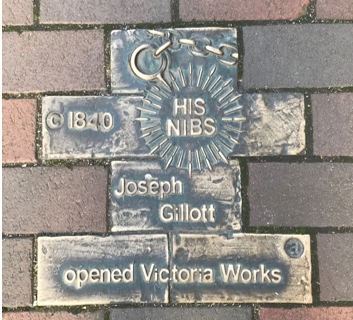
This represents that ‘His Nibs’ manufactured 75% of the world’s metal pen nibs. This stone is located by the pen factory.
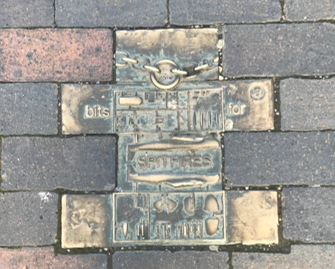
‘Bits for Spitfires’ was a maker of the commemorative medals and machine parts of Spitfires during and after World War Two.
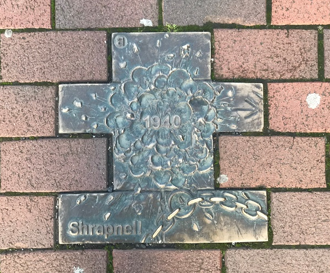
This represents a badge making factory designed by the Germans during World War Two.
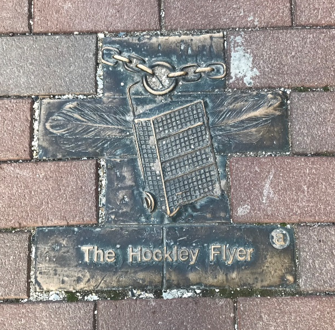
‘The Hockley Flyer’ is the well-known business magazine of the Quarter which is run by its editors and local historian, Marie Haddleton.
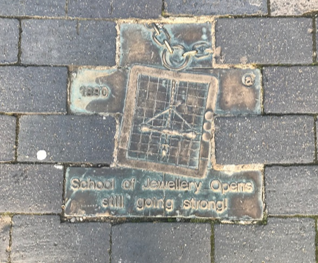
The School of Jewellery. This tile represents the founding of Birmingham’s world-famous School of Jewellery in 1890.
These are just a few of the many tiles that can be found on the Jewellery Quarter Charm Bracelet trail.
This particular trail runs from Newhall Hill and Frederick Street and continues onto the second trail, the ‘Findings Trail’, which can be found along Newhall Street, which continues on to Graham Street.
The Charm Bracelet Trail is the wonderful work of Mick Thacker and Mark Renn, who showcase more of their work at Warwickshire County Cricket Ground.
The trail begins with a key and is then followed by “Silent Boots”, which represents the fact that in the 1890s officers in the Jewellery Quarter were issued ‘silent boots’ to apprehend thieves.
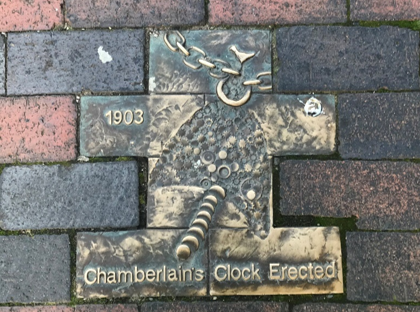
The trail ends with The Chamberlain Clock, the Jewellery Quarter’s famous landmark, erected in 1903 to commemorate local MP, Joseph Chamberlain.
So, after Samara’s review of the trail, will you be making a trip to take in the sights of the area?
